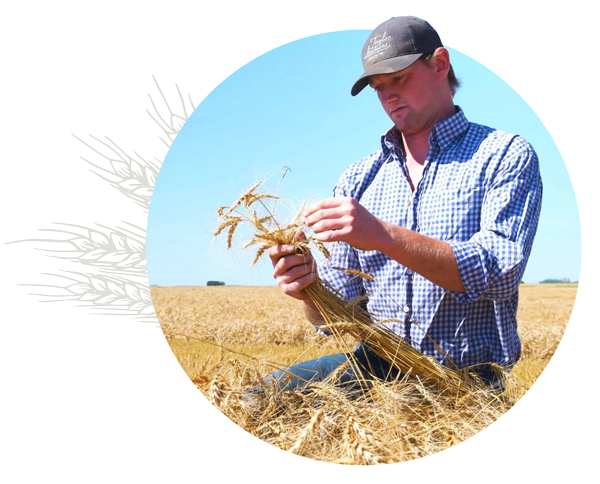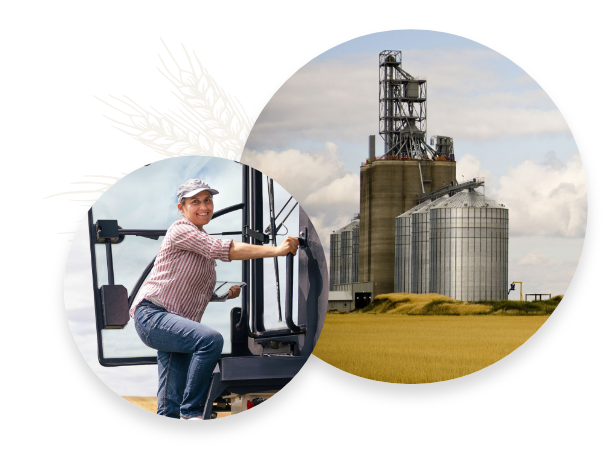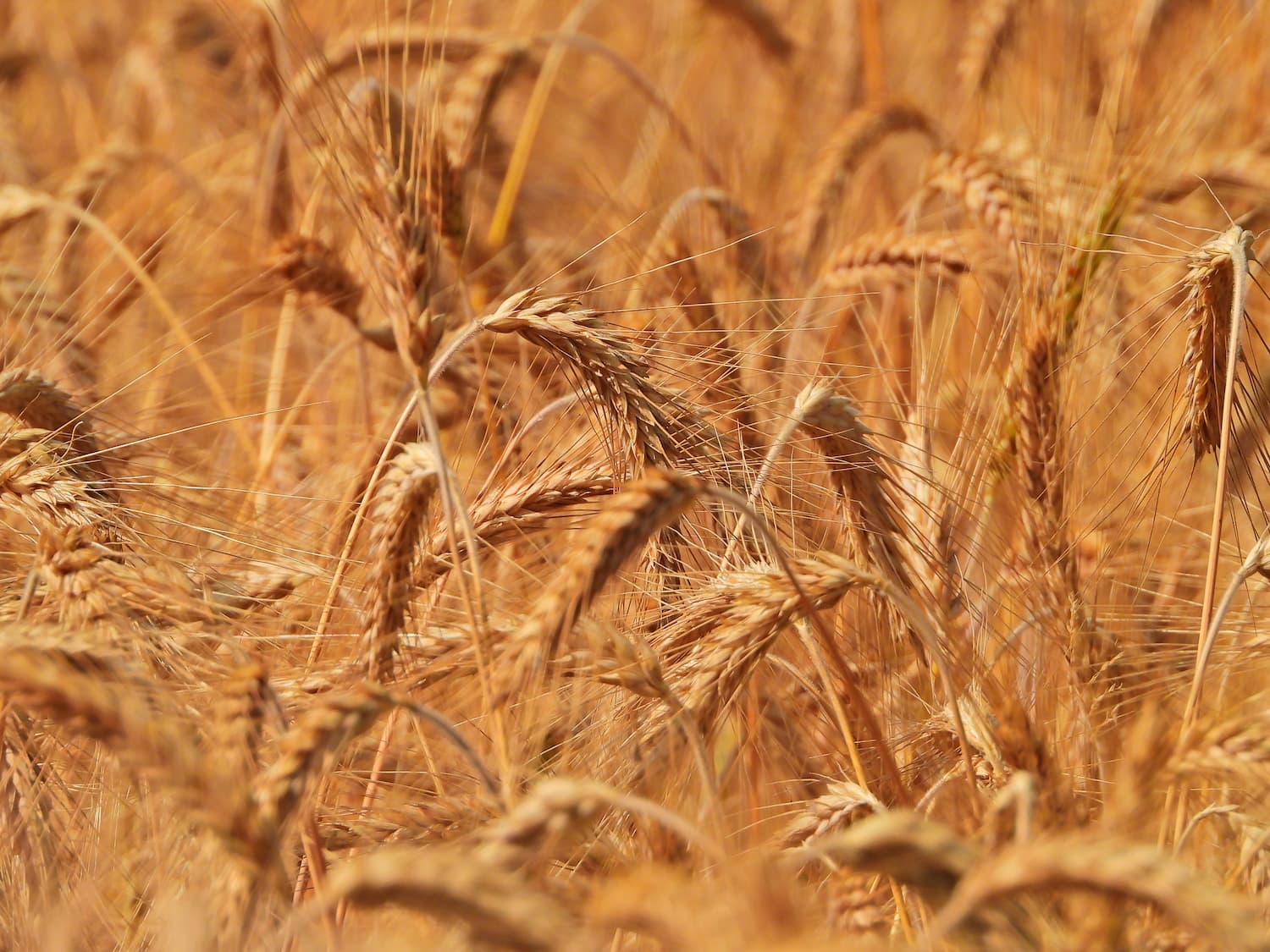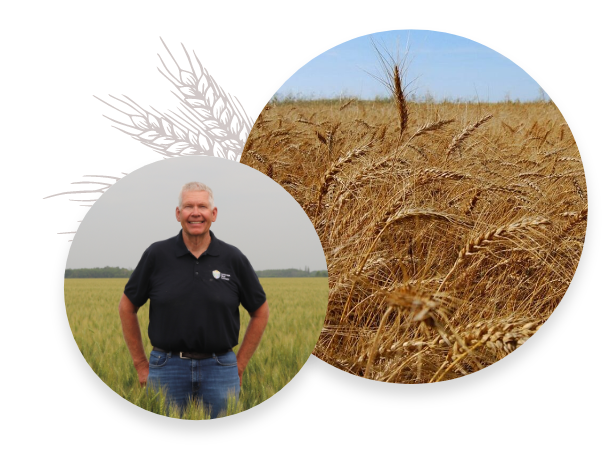
Program Benefits for
Farmers
Diversify your Crop Options with Winter Wheat
Do you want to diversify your crop options, unlock on-farm advantages, and help Canadians make sustainable choices? Grow winter wheat.
Western Canadian winter wheat delivers a variety of on-farm agronomic advantages such as improved soil health, higher crop productivity, and more efficient use of crop inputs. Winter wheat also provides farmers with the flexibility to sell their product to different markets.

The Habitat-Friendly Winter Wheat Ecolabel Program: a Great Fit for Western Canadian Farmers
This unique initiative creates a niche opportunity to sell your winter wheat
to higher-value markets, like consumer food products, while demonstrating
how you’re protecting the environment. The Ecolabel program leverages
Canada’s grain classification and variety registration system allowing farmers
to participate without the need for on-farm audits or certification.
The focus of the traceability system for the Ecolabel is on each step of the supply
chain after grain is delivered from the farm and to the point that it is incorporated
in a consumer-facing product. Farmers participate simply by growing Western Canadian winter wheat and delivering it to certified grain handlers or mills.

New, high-yielding, disease-resistant varieties are now on the market—talk to your provincial crop commission, agronomist, or crop advisor to talk about adding winter wheat to your rotation.
Nine Reasons to Grow Winter Wheat
Winter Wheat…

- Is planted in the fall, reducing the stress of a busy spring workload
- Is harvested several weeks before spring wheat
- Makes better use of available equipment and resources
- Provides ground cover to reduce soil erosion
- Traps snow, improving spring moisture availability
- Improves the efficiency of crop protection products
- Helps manage herbicide
resistance - Is a very high-performing and profitable crop
- Provides additional nesting habitat for waterfowl and songbirds on the Canadian Prairies

Growing habitat-friendly winter wheat encourages using industry-supported BMPs for crop production and is supported by farmers and producer groups across the Prairies.
Canadian Farmers Recognize the Unique Benefits of Winter Wheat
Gary Stanford, Alberta Winter Wheat Farmer
As many key players in the Canadian wheat industry continue working to improve opportunities for the development, production, and sale of winter wheat, I encourage farmers to speak with their crop commissions and agronomists as the first step in growing winter wheat on their farms.
Due largely to the many periods of drought in our area, I grow winter wheat as it provides a way to use moisture from the winter to sustain my crop. Now, decades later, I have a new perspective on the many other benefits of incorporating Canada Western Red Winter (CWRW) into our crop production.
“I encourage farmers from all around the Prairies to take a new look at the benefits of growing winter wheat. Since I started farming in the early ‘80s, winter wheat has continued to have a place in my crop rotation. Whether grown on dryland or irrigated acres, winter wheat is a successful crop that continually performs well on both land types on my farm.”
Gary Stanford is a dryland and irrigation farmer near Magrath in southern Alberta. Gary farms 3,000 acres along with his two sons and has been proudly involved with the Alberta Winter Wheat Producer’s Commission, the Alberta Wheat Commission, and other industry initiatives throughout his farming career.

New Varieties
Winter wheat is a success story on Gary Stanford’s farm thanks to the ever-evolving developments in research and variety breeding throughout the years.
New winter wheat varieties that have come out are incredibly well-resistant to disease, with options specifically developed for high yielding production on dry or irrigated zones throughout the Prairies, and should encourage renewed consideration from both young farmers and the older generations.
Sustainability
Another aspect of growing winter wheat that farmers should not lose sight of is sustainability. Winter wheat has improved the soil quality on my farm by preventing soil erosion from high winds, capturing moisture, and by increasing the organic matter for future rotations.
Wildlife also benefits, as our winter wheat fields provide disruption-free nesting habitats for many waterfowl species, such as the northern pintail. Protecting ecosystems and encouraging sustainable farming practices is beneficial for all in our industry.
Now is a Great Time to Grow Winter Wheat
Doug Martin, Manitoba Winter Wheat Farmer
Doug Martin grows winter wheat, hard spring wheat, canola, soybeans, and grain corn in the heart of Manitoba.
Each year, Doug grows a smaller acreage of each of the crops in his rotation, planning for staged seeding and ripening. He can then utilize the same equipment over his entire 4,000 acres. Winter wheat goes in after the canola comes off in the fall and is the first crop to be harvested in early August.
“We zero-till winter wheat into our canola stubble, which offers sustainable benefits. We farm in a wetter area, where tillage is still popular. We leave the stubble standing to catch the snow to insulate the sprouts to get through the winter. Winter wheat is a good crop to plant if you’re aiming to reduce tillage.”
Doug Martin is a fourth-generation farmer operating a mixed farm on his family’s land near Selkirk, Manitoba. He is an active member of the Manitoba Crop Alliance.

Competitive Advantage
Winter wheat has several competitive advantages both in the field and in the bin. “We rarely have to spray for weeds during the growing season. Winter wheat gets a head start – it’s a very competitive crop. And it comes off early – early market gives you good cash flow off the combine, which frees up bin space before other grains come off.”
“I’ve been growing Wildfire, which has good winter hardiness. Once you get the wheat through the winter, you’ve got it made. Newer winter wheat varieties are getting close to hard red spring when it comes to milling quality and protein.”
The Ecolabel Movement
Doug Martin believes we’re on the cusp of the ecolabeling movement here in Canada and the Habitat-Friendly Winter Wheat Ecolabel program could be the beginning of more to come.
“Winter wheat hasn’t historically been a very high value crop, so the opportunity to differentiate and add-value through an ecolabel is an exciting prospect. Millers and end-users have really embraced the Habitat-Friendly Winter Wheat Ecolabel and are moving it to market. Hopefully it will create demand and create more value for our winter wheat. It’s been really interesting seeing this project evolve.”

